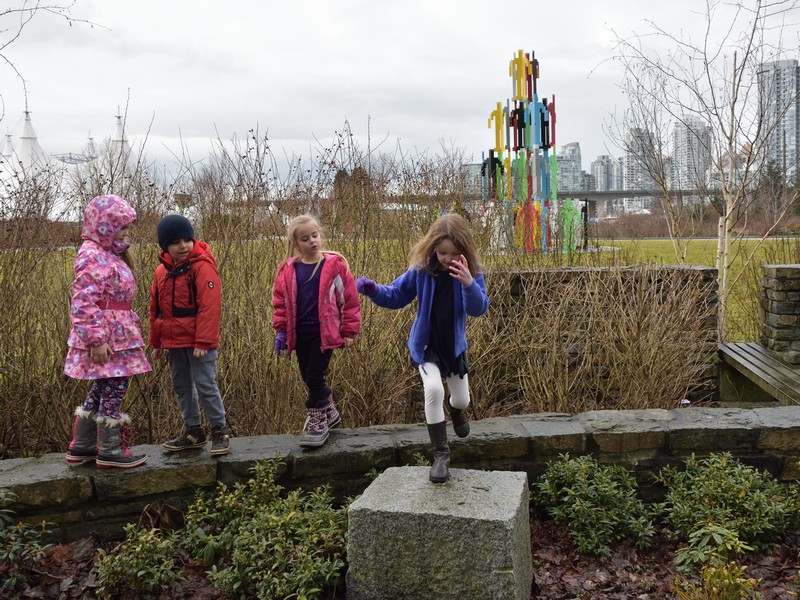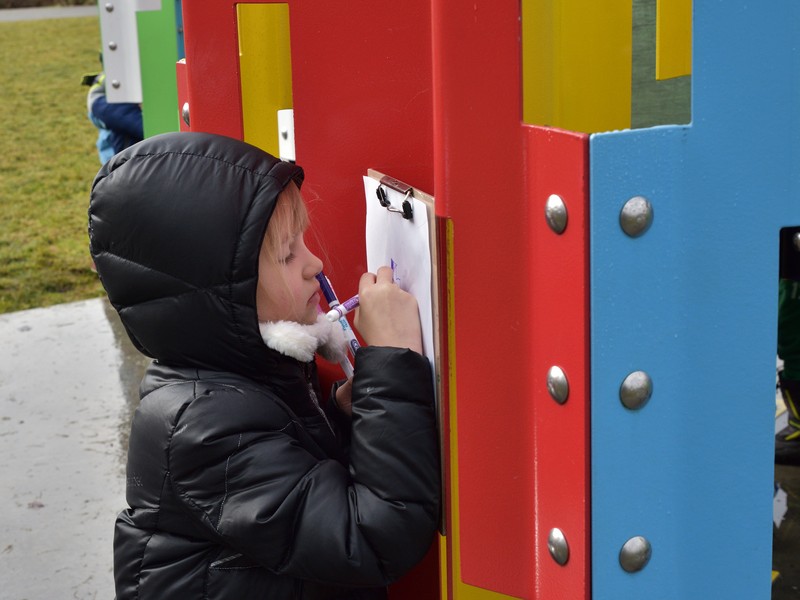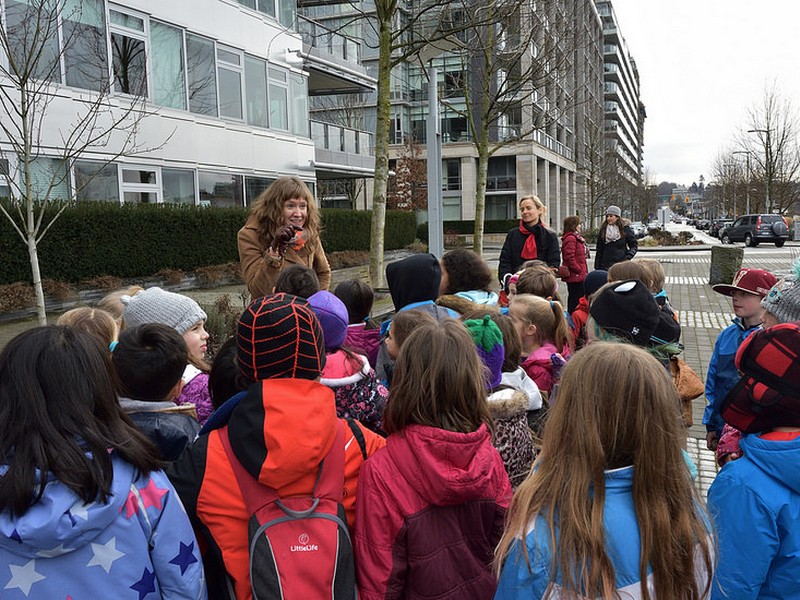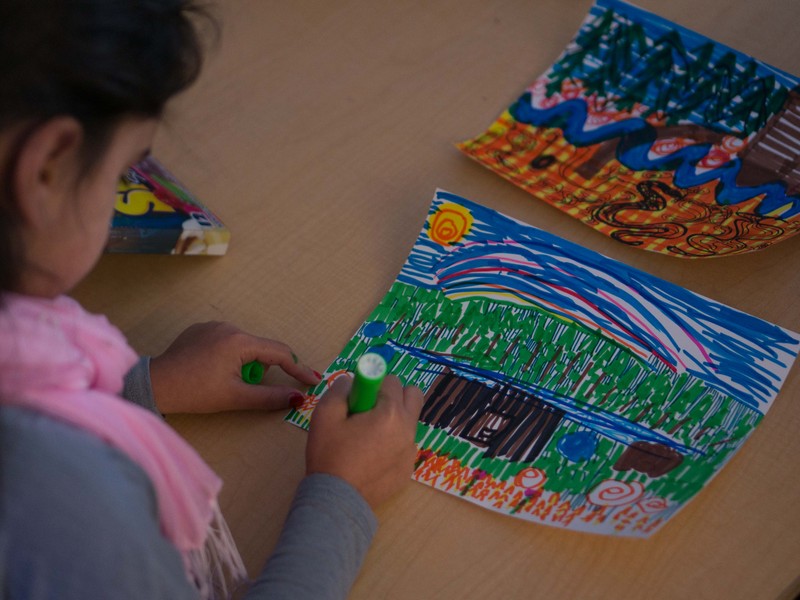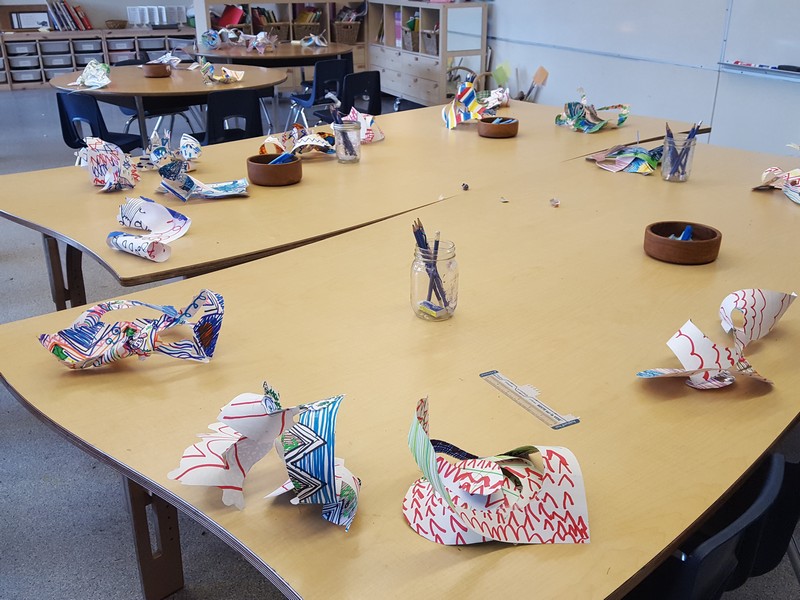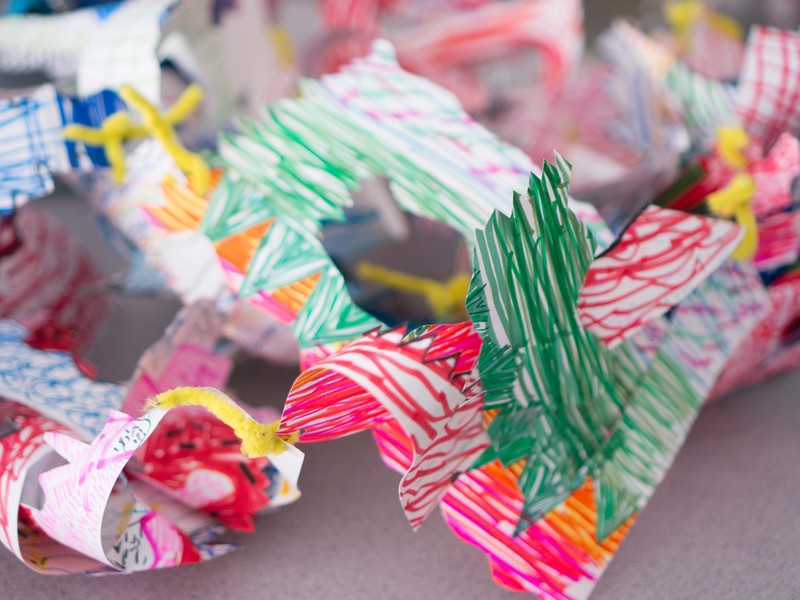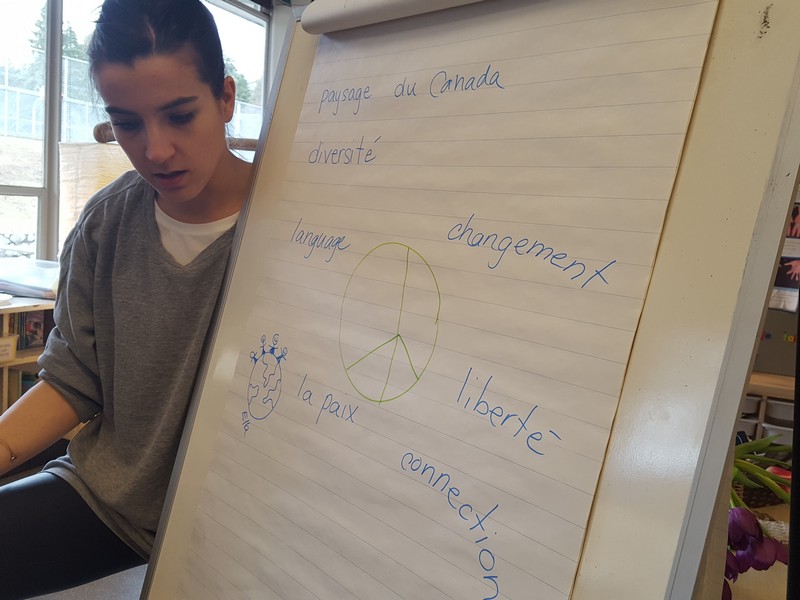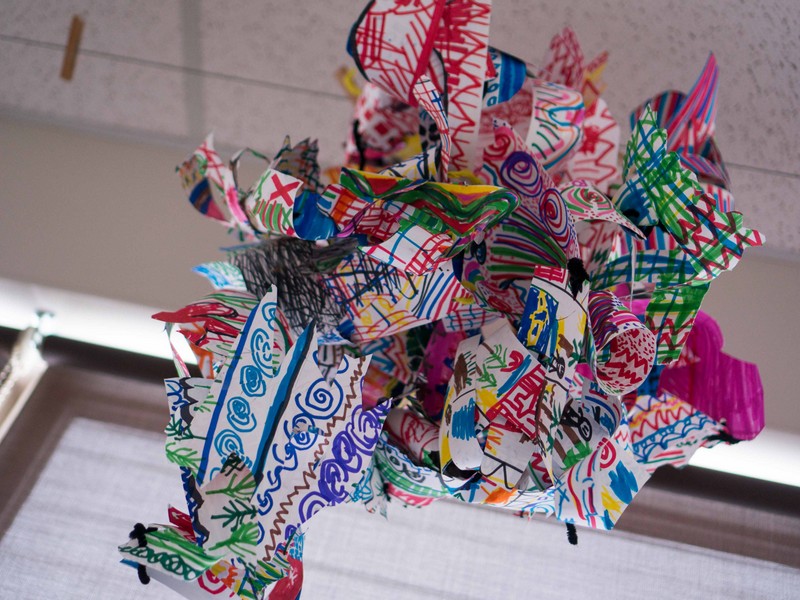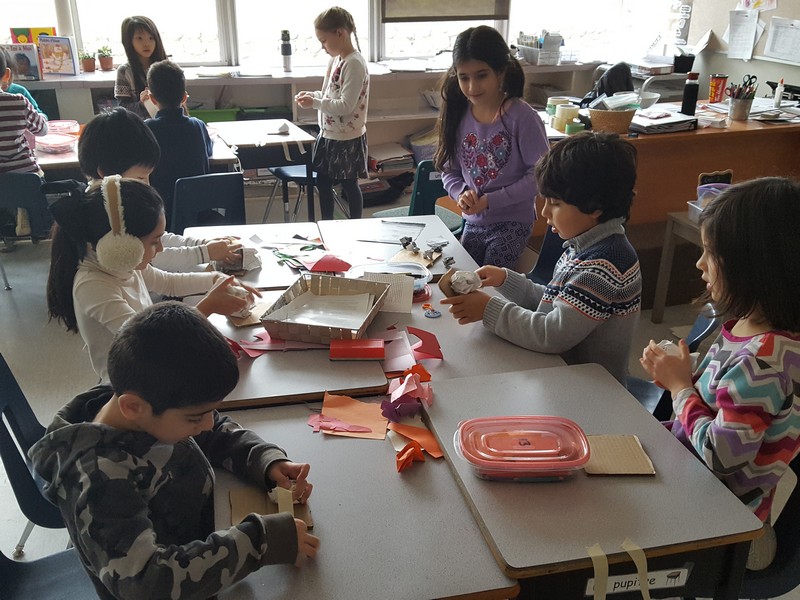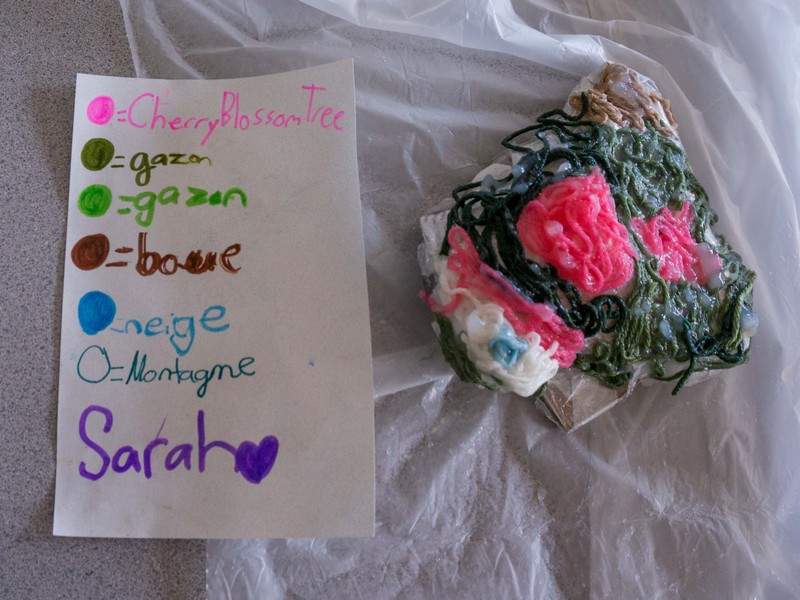École Cedardale: Sharing the Planet
Arts Education, Mathematics, Social Studies
School: École Cedardale Elementary, West Vancouver
Teacher: Stina Morissette, Renelle Allard, and Erin Gleason
Artist Collaborators: Amelia Epp
Class: Grade 1/2 French Immersion
Overview
An exploration of Canada’s diversity as represented through the arts, in its communities. Students looked at diverse characteristics of communities and cultures in Canada and around the world, including Canadian First Peoples community and culture.
The Vancouver Biennale Art Inquiry Experience
Human Structures Vancouver by Jonathan Borofsky (Main focus and provocation)
Since the unit of inquiry has a focus on Canada’s diversity and how our local and global communities have been built by diverse groups of people coming together, it presents a natural connection to the meaning behind the Biennale public art – “Human Structures Vancouver focuses on the notion of humanity working together to build our world.”
Through a conversation on the artist’s statement that “The distinctive shape of the galvanized steel plates refers to pixels, the base unit of computer imagery, and comments on the structural connections in our digital world.”, it facilitates an inquiry on building connection to the digital world through a study of pixels and linking to screen time in the classrooms.
let’s heal the divide by Toni Labour(Secondary artwork)
Making reference to Toni Latour’s piece let’s heal the divide to extend the discussion beyond cultural diversity covering economic diversity. Asking questions including: How has Vancouver changed over the years? Looking at images from past to present and point out both similarities and differences. Use sculpture or photography to express and represent findings.
BIG IDEAS
Canada’s diversity is represented in its communities
Guiding Questions
- What key cultural aspects are found within communities ? (perspective)
- How can we respect diversity within our community ? (responsibility)
Cross-Curricular Access
Arts Education:
● Inquiry through the arts creates opportunities for risk taking.
● People connect to the hearts and minds of others in a variety of places and times through the arts.
Social Studies: Canada is made up of many diverse regions and communities.
Mathematics: Objects and shapes have attributes that can be described, measured, and compared.
Learning Process/Timeline
This Unit of Inquiry started late January for about 6 weeks. The students and teachers went on the field trip with the artist collaborator at the end of January.
Key Concepts:
Change, Perspective, Responsibility
Related Concepts:
Lifestyle, Culture, Diversity (identity)
Lesson 1: Public art as a tool for communicating messages
● Why do artists create public art?
● How can art communicate a message? What does our school’s house post aim to communicate ?
● Show students photographs using an iPhoto slideshow of different public art installations and have them brainstorm in groups with possible messages the art may be communicating.
Art Making Activities: Create public art outside of our school to communicate a message (sidewalk chalk, found materials creations…:)
Lesson 2: Visit to the Human Structures Vancouver installation
● What is the artist trying to communicate?
● What message might the artist be communicating ?
● At the site have students use the Mind Up technique of using their senses to make observations and record what they see, smell, hear & touch in the community around the sculpture (the community) and at the sculpture itself (colour, shape – pixels, size, texture) using photography, drawings and words
● At the site ask students what they think the artist is trying to communicate ?
● Why do you think the artist choose the particular size for the sculpture ?
● Why would the artist choose to make the sculpture look “pixelated” ?
● How are pixels important in our community? Our world?
Art Making Activities: After visit to see Human Structure Vancouver, students paint/draw on 8.5”x11” white card stock: on one side of paper: students choose colours that represent their families (colours from flags) on one side of paper and on the other side, students choose colours that represent a geographical area of Canada.
Lesson 3: Communities found in the Lower Mainland
● How is our community of West Vancouver culturally diverse? Why is the Squamish nation an integral part of our community ?
● How are other communities in the Lower Mainland of Vancouver culturally diverse?
● Look at Toni Latour’s piece let’s heal the divide to discuss not only cultural diversity but also economic diversity
● How has Vancouver changed over the years?
● Look at images from past and present to look for similarities and differences
● Possibly use sculpture or photography to represent our findings
Lesson 4: Communities in Canada
● What are the different languages spoken in Canada? Why?
● How are Canadian communities different and the same?
● How has Canada changed through time?
Lesson 5: Communities around the world
● Watch parts of the documentary “Life in a Day” and/or “Babies” as a provocation to invite discussion around the differences and similarities of communities around the world
● Do all communities get along ?
● How has the digital age shifted our understanding of the world ?
Lesson 6: Looking at our diverse classroom community
● Mini Identity Project for home : ask students to interview their families about their personal heritage and diversity. Ask students to bring in artifacts (photos, clothing, art etc. ) that represent their family culture.
● How has the digital age shifted our understanding of the world ?
Lesson 7: What is the cultural representation of our classroom communities ?
● Students can look at where their background and culture primarily live in Canada.
● Where are a majority of our cultures found in Canada?
● How are they celebrated? (role play, tableau activities)
● How did they arrive in Canada?
● Why did they come to Canada?
Lesson 8: How can we respect diversity in our community?
● What does diversity mean?
● How do we and how can we show respect to the diversity of our classroom, school, local community, country and world?
● Begin creation of Summative Task – an artistic representation of our classroom community’s diversity that demonstrates the student’s understanding of the diversity not only in our classroom but in Canada and the world.
Art-Infused Learning Process
After the visit to Human Structures Vancouver, the students discuss the following quote from by Jonathan Borofsky: “We are constantly in a process of connecting together to build our world” and the following guiding questions throughout the creative process: In what ways do we connect together to build our world? in our schools, in our neighbourhoods, in our city, in our province/country and across the world. Furthermore the students are challenged to consider what responsibilities do we have to our various communities and to the natural environment and how are we connected to other parts of the world?
Art Making Activity #1: After visit to see Human Structure Vancouver, students paint/draw on 8.5”x11” white card stock: on one side of paper: students choose colours that represent their families (colours from flags) on one side of paper and on the other side, students choose colours that represent a geographical area of Canada. Students share/review the choices they made in painting their pieces of card stock.
Art Making Activity #2: Students explored the sculptural/three-dimensional possibilities of paper through the creation of three-dimensional sculptures and join the individual pieces to create one large sculpture. Through joining their sculptures together, students investigated the ways in which our personal and broader communities are connected and consider diversity within Canadian communities.
Students drew lines on paper using pencil, cutting out, and creating sculptures. Artist collaborator introduced the concept of collaborative decision-making process (students to make choices along with classmates about how to join their sculptures together). Students reflected on process of joining their individual sculptures to other sculptures. Through discussion/writing, students reflected on how the collaborative installation reflects diversity in communities, connections within communities (local/national/global).
Art Making Activity #3: Students reviewed what they learned about sculptures and working in 3D from last art making activity. Students learnt a technique for creating a 3D relief sculpture using crumpled paper and tape. Students created a relief (mould) inspired by a place in the natural environment that they care about and that they would like to protect and the land forms in this place. Students created their relief through crumpling paper and taped it down onto cardboard to create 3D forms. Once they have created their desired form they covered it with packing tape so that they can use it as a mould to create a sculpture (so that paper/string will release when they use paste to attach it onto the mould). Students wrote about the outdoor places and land forms that they chose to depict in their reliefs/moulds.
Students considered ways in which colour can be chosen to represent ideas and concepts through discussing the artwork We are all Part of the Same Thing by Dominique Falla. Students learnt a technique for creating a sculpture (cast of their mould) using yarn and cornstarch paste. Students viewed and discussed Dominique Falla’s artwork We are all Part of the Same Thing considering her choice of material (why string?) and her choice of colours (what might the colours represent?). Students chose colourful yarn to create their individual ‘web relief sculpture’ considering the above questions. Students adhere yarn to moulds and each student created a legend to indicate what each colour in the sculpture represents.
Once string/paper sculptures are dry, they were removed from the moulds and displayed as web relief sculptures together in a grid forming a large/collaborative ‘web of connections’. The students discussed as a class the ways in which the individual and collaborative web sculpture represents community, responsibilities to community, connections within communities, language diversity, etc.
Students carried out web activity in connection to following questions: In what ways do we connect together to build our world? What responsibilities do we have to our various communities (locally/Canada/the World) in person and online? How are we connected to other parts of the world? How are we connected to other parts of the world? Do our local actions have global impacts? How?
Students took turns tugging on yarn to demonstrate interconnections within the ‘web’.
These collaborative summative projects in sculptural forms represented each student’s individual history/culture and the school’s diverse community. The student creation was shared to a larger audience in order to share our respect and understanding of diversity in Canada via an art show, displaying our creation in public, sharing our movie or photographs using social media…
Reflection
Artist – Amelia Epp
The theme of connections within and across communities was carried throughout the field trip and art making sessions in a meaningful way. We also ended up carrying forward the themes of geography, land forms, and places of importance in the natural environment. The planning and development of the ideas for the art making sessions came about in a somewhat organic way, as we did not predetermine the sequence of activities and even the specific topics that we would focus on from the start of the project. As the students created work and took part in discussions in class with their teachers, the ideas for the art activities evolved. Throughout this inquiry process we were able to draw out some interesting and meaningful connections between the field trip, the students’ classroom curricular studies, and the various art making activities.
It would have been nice to have referred back to the students’ documentation of the field trip in my subsequent visits to the classroom. The students perhaps could have compiled drawings or writings resulting from the field trip in a poster or on a wall in the classroom. We did view images of Human Structures Vancouver in order to reflect on the visit, but student drawings and writings would have enhanced these reflections. It also might have been effective to have the students reflect on a specific question or theme while visiting the sculpture (relating to the big ideas and main topics that we hoped to explore).
As part of the final art making session we discussed the work of the artist Dominique Falla. This sparked really meaningful discussions with each of the three classes and tied in well to the students’ final sculptural work. I would have liked to have had more time to connect Dominique Falla’s artwork and the students’ final artwork back to Human Structures Vancouver.
Credits
Photos at Human Structures Vancouver by roaming-the-planet
Art Making photos by Amelia Epp and Katherine Tong
